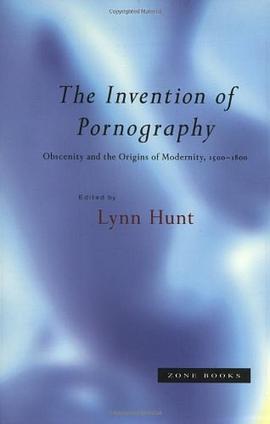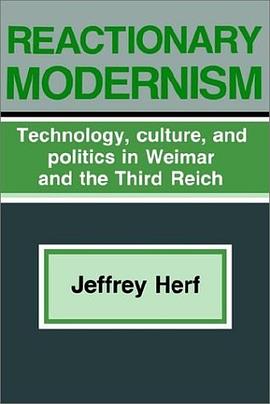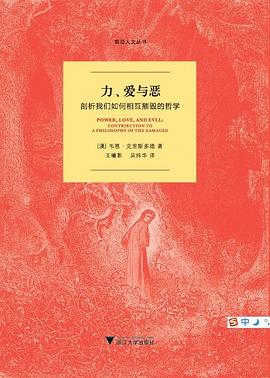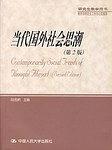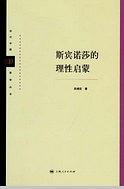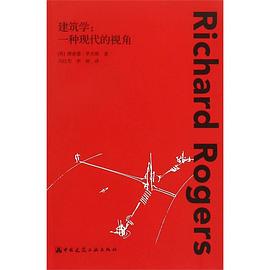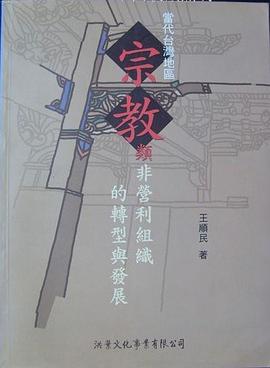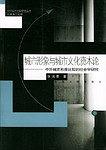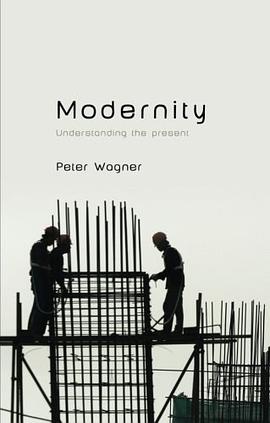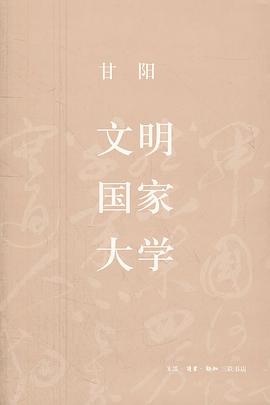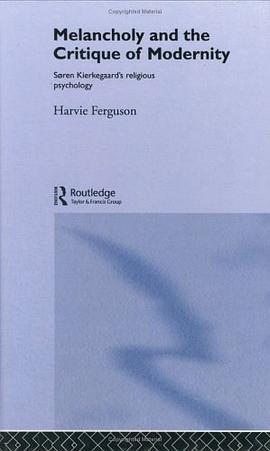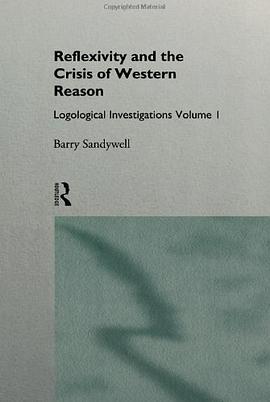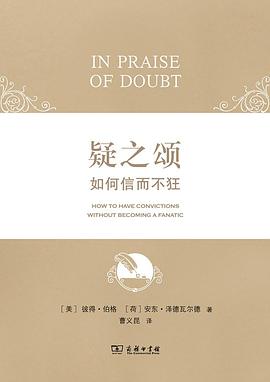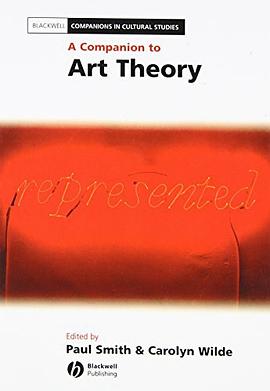
A Companion to Art Theory pdf epub mobi txt 电子书 下载 2025
- 艺术
- 艺术理论
- 艺术史
- 艺术(史)研究
- 现代性
- art
- history
- design
- Art Theory
- Visual Arts
- Theory of Art
- Critical Theory
- Art History
- Art Practice
- Aesthetics
- Creative Expression
- Interpretation
- Art Criticism

具体描述
The Companion provides an accessible critical survey of Western visual art theory from sources in Classical, Medieval and Renaissance thought through to contemporary writings.
作者简介
保罗·史密斯,英国布里斯托尔大学艺术史准教授(讲师)。他之前的出版物包括《印象主义:外观之下》《解释塞尚》和《修拉和前卫》。 卡罗琳·瓦尔德 英国布里斯托尔大学哲学系高级讲师。她的出版物包括哲学美学方面的文章,最近发表的《绘画艺术的风格和意义》,刊登在由罗布·凡·格文主编的《理查德·沃尔海姆论绘画艺术》一书中。
目录信息
Part I: Tradition and the Academy:.
Introduction: Alberti and the Formation of Modern Art Theory (Carolyn Wilde).
1. The Classical Concept of Mimesis: Göran Sörbom (University of Uppsala).
2. Medieval Art Theory: Hugh Bredin (The Queen's University of Belfast).
3. Neoplatonist Aesthetics: Suzanne Stern-Gillet (Bolton Institute).
4. Renaissance Art Theories: François Quiviger(Warburg Institute).
5. Touch, Tactility, and the Reception of Sculpture in Early Modern Italy: Geraldine Johnson (Harvard Center for Italian Renaissance Studies).
6. The Spiritual Exercises of Leonardo Da Vinci: Robert Williams (University of California, Santa Barbara).
7. Academic Theory 1550-1800: Paul Duro(University of Rochester).
8. Rhetorical Categories of the Academy: Caroline van Eck(Free University).
9. The Picturesque and its Development: Andrew Ballantyne(University of Bath).
Part II: Around Modernism:.
10. The Aesthetics of Kant and Hegel: Jason Gaiger(The Open University)..
11. E.H. Gombrich and the Tradition of Hegel : David Summers.
12. German Romanticism and French Aesthetic Theory : Wendy Mercer(University College London).
13. Expression: Natural, Personal, Pictorial: Richard Shiff (University of Austin at Texas).
14. Reading Artists' Words: Richard Hobbs (University of Bristol).
15. Nietzsche and the Artist: Michael White (University of Bristol).
16. Wittgenstein, Description, and Adrian Stokes (on Cézanne): Paul Smith(University of Bristol).
17. Modernism and the Idea of the Avant-Garde : Paul Wood (The Open University).
18. On the Intention of Modern(ist) Art: Fred Orton (University of Leeds).
19. Anti-Art and the Concept of Art: Paul Humble (University of Central Lancashire).
20. Marcel Duchamp's Readymades and Anti-Aesthetic Reflex: David Hopkins(University of Saint Andrews).
Part III: Critical Theory and Postmodernism:.
21. Marxism and Critical Art History: David Craven.
22. Walter Benjamin and Art Theory: Howard Caygill(Goldsmiths College).
23. Bakhtin and the Visual Arts: Deborah Haynes(Montana State University).
24. Pierce's Visuality and the Semiotics of Art: Michael Leja(School of Architecture & Planning).
25. Conceptual Art: Charles Harrison (The Open University).
26. Barthes on Art: Margaret Iversen (University of Essex).
27. Foucault and Art: Roy Boyne(University of Durham).
28. Derrida and the Parergon: Robin Marriner (Bath Spa University College).
29. Lyotard's Concept of the Sublime: René van de Vall (Maastricht University).
30. Deleuze on Francis Bacon: Ian Heywood (Leeds Metropolitan University).
31. Feminisms and Art Theory: Marsha Meskimmon (University of Loughborough).
32. Psycho-Phallus (Qu'est-ce que c'est?): Mignon Nixon (Courtauld Institute of Art).
Part IV: Interpretation and the Institution of Art:.
33. The Rules of Representation: John Willats.
34. Gombrich and Psychology: Richard Woodfield(Nottingham Trent University).
35. Hermeneutics and Art Theory: Nick Davey (University of Dundee).
36. Reciprocity and Reception Theory: Michael Anne Holly (Center for Advanced Study in the Visual Arts).
37. The Paradox of Creative Interpretation in Art: Carl Hausman (Penn State University).
38. Interdiscipliniarity and Visual Culture: Charlotte Klonk (University of Warwick).
39. Against Curatorial Imperalism: Paul Crowther (University of Oxford).
40. The Institutional Theory of Art: Theory and Anti-Theory: Garry Hagberg (Bard University).
Index.
· · · · · · (收起)
读后感
维特根斯坦论描述 维特根斯坦要颠倒解释和描述的相对重大意义的一个原因,就在于他在语言方面的著作已经说明后者的普遍有效性。那就是,维特根斯坦放弃了他(在1922年《逻辑哲学论》[Tractatus]中所表达的)关于语言具有某种单一的、命题“本质”(存在于其用图画表现自然世界...
评分维特根斯坦论描述 维特根斯坦要颠倒解释和描述的相对重大意义的一个原因,就在于他在语言方面的著作已经说明后者的普遍有效性。那就是,维特根斯坦放弃了他(在1922年《逻辑哲学论》[Tractatus]中所表达的)关于语言具有某种单一的、命题“本质”(存在于其用图画表现自然世界...
评分维特根斯坦论描述 维特根斯坦要颠倒解释和描述的相对重大意义的一个原因,就在于他在语言方面的著作已经说明后者的普遍有效性。那就是,维特根斯坦放弃了他(在1922年《逻辑哲学论》[Tractatus]中所表达的)关于语言具有某种单一的、命题“本质”(存在于其用图画表现自然世界...
评分维特根斯坦论描述 维特根斯坦要颠倒解释和描述的相对重大意义的一个原因,就在于他在语言方面的著作已经说明后者的普遍有效性。那就是,维特根斯坦放弃了他(在1922年《逻辑哲学论》[Tractatus]中所表达的)关于语言具有某种单一的、命题“本质”(存在于其用图画表现自然世界...
评分维特根斯坦论描述 维特根斯坦要颠倒解释和描述的相对重大意义的一个原因,就在于他在语言方面的著作已经说明后者的普遍有效性。那就是,维特根斯坦放弃了他(在1922年《逻辑哲学论》[Tractatus]中所表达的)关于语言具有某种单一的、命题“本质”(存在于其用图画表现自然世界...
用户评价
to be re-read
评分只是挑着看了第二和第三部分,几位笔者的合集。有些挺好的,有些看了却觉得没有太多启发,也可能是自己理解能力还不够吧 > <
评分平均每天三篇左右,终于读完了!最有启发的是第一部分,刷新了我对中世纪、文艺复兴和学院艺术理论的看法。有些文章挺有意思的,讨论的问题也很多(可参看目录),对Picturesque的讨论,对福柯和艺术的讨论,对艺术制度伦的批判都值得Mark一下。当然,有些文章没看懂→_→
评分平均每天三篇左右,终于读完了!最有启发的是第一部分,刷新了我对中世纪、文艺复兴和学院艺术理论的看法。有些文章挺有意思的,讨论的问题也很多(可参看目录),对Picturesque的讨论,对福柯和艺术的讨论,对艺术制度伦的批判都值得Mark一下。当然,有些文章没看懂→_→
评分to be re-read
相关图书
本站所有内容均为互联网搜索引擎提供的公开搜索信息,本站不存储任何数据与内容,任何内容与数据均与本站无关,如有需要请联系相关搜索引擎包括但不限于百度,google,bing,sogou 等
© 2025 book.quotespace.org All Rights Reserved. 小美书屋 版权所有

